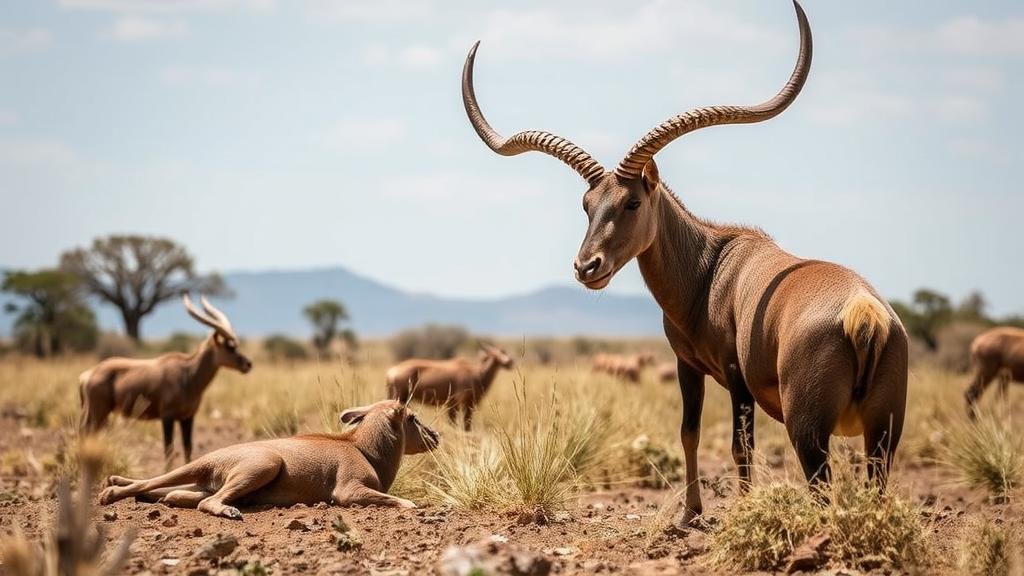Exploring Ancient Game Drives for Tools and Hunting Relics
Exploring Ancient Game Drives for Tools and Hunting Relics
The study of ancient game drives provides invaluable insights into the hunting practices and tool-making skills of prehistoric humans. These game drives, often referred to as hunting corridors or traps, represent sophisticated strategies employed by early hunters to capture prey. By examining the tools and hunting relics found at these sites, researchers can reconstruct the social, ecological, and technological dynamics of ancient human societies.
Understanding Game Drives
Game drives are specific areas designed to funnel animals towards a designated point where hunters can effectively ambush them. e structures can range from simple brush barriers to elaborate stone configurations. They serve not only as hunting aids but also reflect the ingenuity and adaptability of early humans in their pursuit of survival.
One notable example is the Way of the Buffalo in North America, where indigenous tribes created large communal driving formations that directed bison into confined areas for easier hunting. The efficiency of these drives is evidenced by the archaeological findings of tools fashioned from bison bones, signifying their successful and sustained practice over generations.
The Archaeological Significance of Tools and Relics
The tools found at ancient game drives are critical in understanding the technological evolution of hunting methods. e artifacts include stone blades, projectile points, and other gear that indicate the sophistication of hunting techniques. For example, the Clovis culture, known for its distinctive stone spear points, illustrates early humans ability to hunt large game with precision and efficiency.
Recent excavations in the Great Plains have uncovered Clovis points alongside mammoth remains, suggesting that these early inhabitants employed coordinated hunting tactics during the late Pleistocene epoch. Also, the presence of grinding tools indicates that these groups were not only hunters but also gatherers who processed and consumed various plant species.
Case Studies of Ancient Game Drives
- The Sourcing of Materials: Research at the La Brea Tar Pits has revealed the use of local obsidian in tool-making, showcasing the importance of material sourcing in ancient hunting and processing activities.
- The Role of Geography: An analysis of hunt sites in the Sahara Desert illustrates how ancient populations adapted their strategies based on transitory water sources and animal migrations, leading to a deeper understanding of climatic impacts on human survival.
Technology and Innovation in Ancient Hunting
As technology evolved, so did the complexity of hunting tools. progression from simple stone hand axes to sophisticated compound tools like the atlatl (a spear-throwing device) exemplifies this advancement. Archaeologists have noted that the introduction of composite tools increased the range and effectiveness of hunting strategies.
The development of these technologies not only reflects an understanding of physics and engineering principles but also showcases a cultural shift towards more communal and strategic forms of hunting. Plus, the differentiation between specialized roles within tribes–such as makers of tools versus users–suggests a division of labor that is integral for efficient prey capture and resource utilization.
Current Research and Real-World Applications
Modern researchers utilize various methodologies, including geoarchaeology and predictive modeling, to identify potential game drive sites. use of Geographic Information Systems (GIS) allows scientists to analyze spatial patterns and predict where ancient populations might have established their drives based on environmental variables.
This research is not just academic; it has implications for contemporary wildlife management and conservation. By understanding ancient human strategies and interactions with wildlife, modern conservationists can develop more effective practices for managing and protecting endangered species.
Conclusion
Exploring ancient game drives for tools and hunting relics provides a profound understanding of the interplay between environment, technology, and human behavior in prehistoric societies. As new technologies and methodologies continue to evolve, the potential for uncovering more about our ancestors life ways remains vast. lessons learned can inform not only our understanding of history but also contemporary ecological practices. For those engaged in conservation and wildlife management, the study of these ancient strategies offers valuable insights into sustainable practices that respect both nature and heritage.



